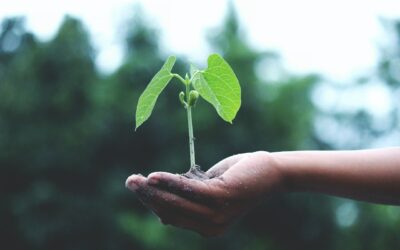This post was originally published on Sustainability Matters
When the Victorian Government, in July, announced a ban on gas connections in new homes and government buildings from next year, the plan received overwhelming support from environment groups and the property and construction sectors.
It was seen as a breakthrough for a state that is heavily reliant on natural gas, especially for heating homes and business. It also accounts for around 20% of Victoria’s emissions.
Switching away from natural gas, especially in new homes, was just one of 94 recommendations Infrastructure Victoria made to the Victorian Parliament in August 2021 as part of its 30-year infrastructure strategy update.
“The 30-year infrastructure strategy covers many infrastructure areas that the Victorian Government and Parliament have responsibility for either directly or through influence, and energy is absolutely one of them,” explained Dr Jonathan Spear, Chief Executive Officer at Infrastructure Victoria.
“The focus of our work and advice is what role the Victorian Government can play in the energy transition, conscious that, of course, there’s a real mix of players across different jurisdictions, government, private sector and for individual consumers as well.”
Spear brings his background in law, history and public administration in leading Infrastructure Victoria. Previously serving as Deputy Chief Executive, Chief Operating Officer and General Counsel, he has played a pivotal role in crafting the organisation’s research and advice.
On stage at All-Energy Australia’s conference, 25–26 October in Melbourne, Spear will speak about the pressing need to decarbonise Victoria’s infrastructure and energy sectors to achieve net zero emissions by 2045.
“I’m trained as a lawyer and as an historian, so I’m really interested in good public policy and strategy,” Spear said.
“The great thing about infrastructure is it touches on so many aspects of people’s lives and there’s often a connection across different infrastructure sectors, which is certainly true of energy, and it reflects a lot of the changes that happen.
“Being able to influence policy change through the work of an independent organisation, that collaborates widely across government, the community and the private sector is really rewarding.”
At All-Energy Australia, Spear will speak to the priority actions the Victorian Government can take to support the energy sector to meet the complex, long-term and competing priorities of acceleration of renewable energy, decarbonisation of the gas infrastructure network, and large-scale uptake of zero-emissions vehicles, all in a period of rapid change, uncertainty and fiscal constraint.
“There’s certainly a role for the Victorian Government, and other states and territories, to play increasing zero emission vehicle uptake,” Spear said. “Offering more opportunities to choose active transport, like walking and cycling, and public transport is also really important. We’re not going to achieve transport emission reduction targets without mode shift as well.”
Spear said when it comes to private households and businesses, there’s an enormous opportunity for a shift towards greater energy efficiency.
“We’ve called for increasing transparency of home energy ratings, at point of sale and rent, so that consumers can make more informed choices about the type of home they are going to live in and the impact on their energy bill.”
Spear said the Victorian Government can help manage demand through pricing signals that encourage consumers to use off-peak energy and reduce peak demand.
During the conference, he will also speak about the in-depth work Infrastructure Victoria has done on the implications for net zero emissions of Victoria’s extensive gas infrastructure.
“Our work, ‘Towards 2050: Gas infrastructure in a net zero emissions economy’, was an input to the Victorian Government’s gas substitution roadmap,” Spear explained. “It showed immediate and sustained action is needed to support proven, low carbon solutions — including energy efficiency, targeted electrification, hydrogen and biogas — if Victoria’s gas sector is to reach net zero emissions by 2050.”
Spear said All-Energy Australia is important to bring together so many leaders from across different components of the energy sector.
“It is great to hear each other’s voices through a great mix of industry experts, think tanks, government and community that are able to share ideas across jurisdictions,” Spear said.
“Victoria has particular challenges, for example, our reliance on natural gas is distinctive compared to other jurisdictions. But we’ve also got shared challenges, a shared east coast energy market for example, so that means that it’s important to bring people from all across Australia to All-Energy Australia, which is great.”
Dr Jonathan Spear will appear at All-Energy Australia on Day One in Plenary Three, Wednesday, 25 October starting at 1.40 pm.
For more details on the conference, agenda, exhibitors and how to register for the free-to-attend event, visit the website at all-energy.com.au.





0 Comments